order

Coleoptera
“Adult Beetles”

Coleoptera
“Larval Beetles”

Diptera
“True Flies”

Ephemeroptera
“Mayflies”

Hemiptera
“True Bugs”

Lepidoptera
“Aquatic Caterpillars, Snout Moths”

Megaloptera
“Alderflies, Dobsonflies, and Fishflies”

Odonata
“Dragonflies and Damselflies”

Plecoptera
“Stoneflies”

Trichoptera
“Caddisflies”
family
Gomphidae
genus
Ophiogomphus
“Snaketails”
Genus Overview
19 species in North America. Larvae are found in various habitats of slower water.
Characteristics
POLLUTION TOLERANCE
Southeast: 6.2
Upper Midwest: 1
0 = least tolerant, 10 = most tolerant
FEEDING HABITS
Engulfer / Predator
MOVEMENT
Burrower
DISTRIBUTION
Widespread (east of the Rocky Mtns.)
HABITAT
Lotic-depositional
Lotic-erosional
Lotic-erosional
Diagnostic Characters
Order
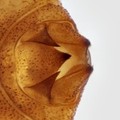
Abdomen with 5 Sharp Stiff Points or 3 Gills
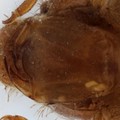
Labial Mask

Two Pairs of Wing Pads
Family
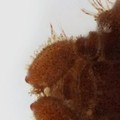
4-Segmented Antennae
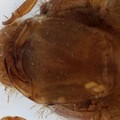
Flat Mask
+ Expanded Character List
Order:
Nymph with mask-like labium below chewing mouthparts. Wings developing in wing pads. Segmented legs present, each with two claws.
Family:
Suborder Anisoptera (i.e., Dragonflies: stout body shape, head more narrow than thorax and abdomen, end of abdomen with 5 short pointed projections, external gills absent). Labial mask flattened, without hair on palm of inside of mask (premental setae) or usually without setae along margins of palpal lobes at end of mask. Ligula (distal margin of labial mask) without median cleft. Antennae each 4-segmented, although 4th segment usually small. Fore- and middle tarsi each 2 segmented. Mature larvae 23–40 mm long, rarely to 65 mm.
Genus:
wing pads strongly divergent, large burrowing hooks on fore and mid tibiae,
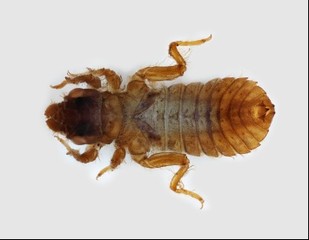
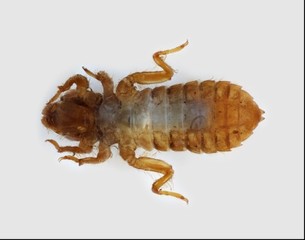
Dorsal
Ventral



